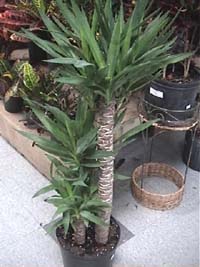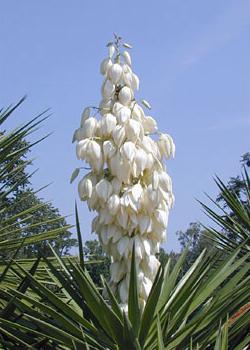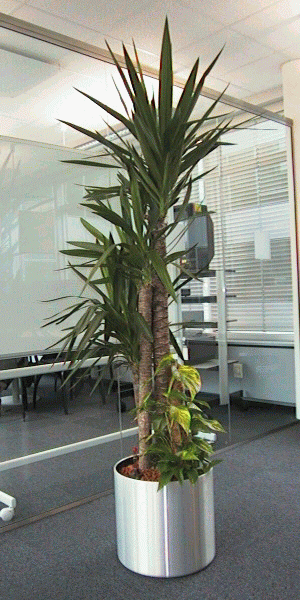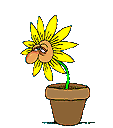|
 |
ADVERTISEMENT... |
 |
|
|

|
HOME AND GARDEN » House
Plants |
Valentine.gr |
|
Plants for your home
(By Mary Efanti)
Yucca
 Description - Origin Description - Origin
A plant that came from far away Mexico and conquered our gardens and our balconies in no
time. One of the most suitable plants to use in a rock garden and the ideal way to quickly ad an exotic touch in any spot of your
garden. This is one of the main reasons that yuccas became so popular, especially in public gardens or
clubs.
Care
Its main characteristics are summarized into these two: extremely hardy and not
demanding. Can handle neglect, it will even survive through your holidays.
Yuccas love and can stand hot summer sun, even during the hottest hours of the day but they do well enough in
semi-shaded spots. Water approximately once a week with little water and more scarce during
winter. Its soil must drain well so it would be helpful to ad grovel at the base of the pot and mix some sand into the
soil.
Its hard sword-like leaves end to spikes that are very hard and may injure
you, so take special caution when you bend towards the plant in order to water or dig its
soil.
Since its leaves are flat and wide, they easily capture dust so whenever you get the chance clean up the plant with
water, either into the shower or using a sponge if yours is an indoor plant
 When yuccas reach
maturity, they flower during the summer months. Its flowers appear in groups, are large white and
impressive, bell-shaped, but this is a sight seldom seen. When yuccas reach
maturity, they flower during the summer months. Its flowers appear in groups, are large white and
impressive, bell-shaped, but this is a sight seldom seen.
It is possible to propagate yuccas but the process is not so
simple, especially if performed by novice gardeners, and is probably not worth the effort given that it is very easy to buy new healthy plants in any nursery and at affordable
prices.
If you want your plant to grow higher, you can cut some of the bottom leaves in order for the plant to focus its strength in growing new
leaves. Keep in mind though, that you will get a high plant but it will be standing on a
leggy, naked trunk. Also, keep in mind that yuccas are not fast growers especially during
winter.
If you get snow or ice where you live, cover the plant with a plastic sheet in order to protect
it, if you don't make it in time try to discard any snow that has settled on its
leaves. A few days of low temperatures will not kill your plant but if it lasts for long you will notice brown spots on the leaves and you should move the plant inside your home or any protected area until the temperature returns to normal
levels.
 Disease Disease
Yuccas are generally resistant to
disease, rarely affected by aphids or spidermites but you might notice some tiny little insects stuck on young
leaves, at the "heart" i.e. where the leaves meet the stem. In this
case you will also notice a sticky substance on the affected areas. If this
happens, remove the insects with water and clean up the leaves using cotton with
alcohol. This is normally enough to solve the problem but if it persists do not hesitate to ask your nursery for something more
effective.
So go ahead and fill your balconies and your gardens with yuccas, they ask for no special care and they fill your surroundings with green color and dreams of exotic
destinations. Especially, within the gray landscape of the big cities most of us live
in, let's create small green oases on our balconies.
Mary Efanti
[email protected]
|
|

|
 |
ADVERTISEMENT... |
 |
|

|
Is your flower sick?
Ask the Flower doctor. Click on the image. |
|
|

|
